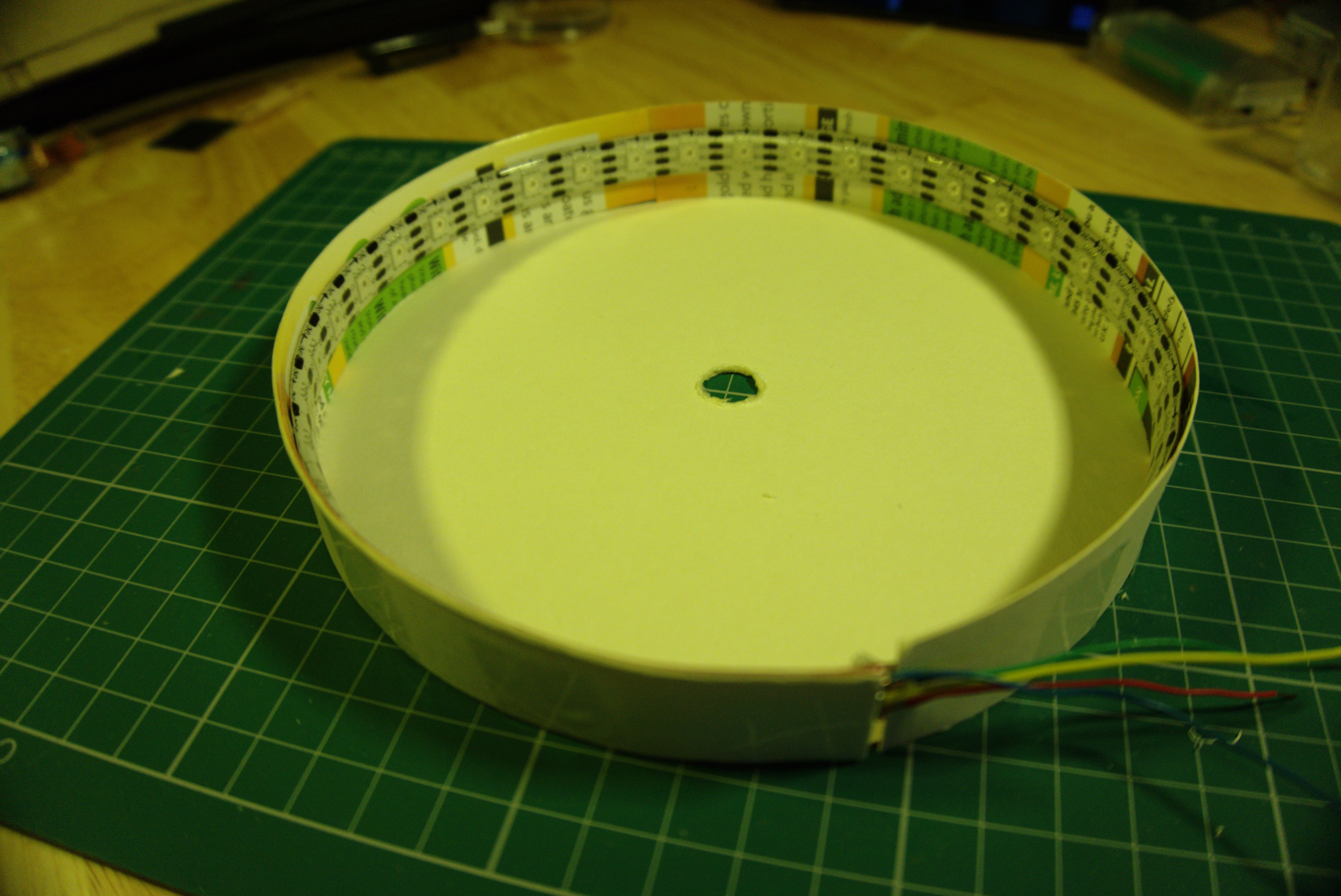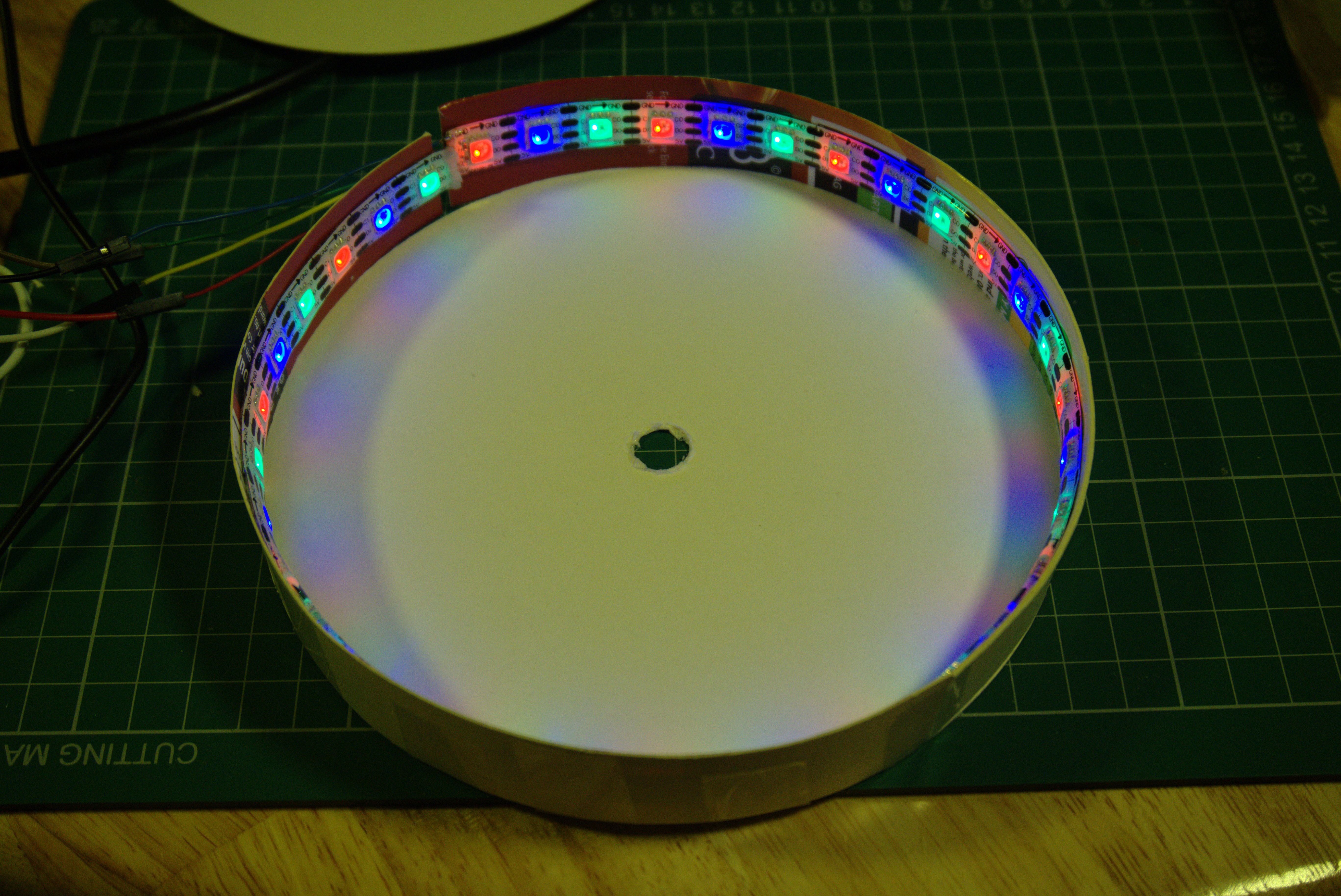
This step took a bit of trial and error. My first cylinder was too small and the beginning and end of the LED strip overlapped too much. I measured the overlap and remade a slightly bigger cylinder.

It is a good idea the test the LED strip frequently after each step in the build to make sure I didn't damage anything. Here I wrote a simple APA102 test program in Python to run on the Raspberry Pi that toggles the GPIO pins to send the RGB data to the strip. This would have been more difficult to do with a WS2812 NeoPixel without the use of a prepackaged neopixel library.
 bornach
bornach
Discussions
Become a Hackaday.io Member
Create an account to leave a comment. Already have an account? Log In.